We’ve transitioned from a manufacturing-based to creativity-based culture over the years. In a creativity-based culture, “the way is paved for artists, musicians, and other such types as industries of production decrease in precedence.” - Ellen Dunham-Jones, ‘New Urbanism as a Counter-Project to Post-Industrialism.’ In this POST-industrial world, how we define ourselves and what society looks like is for us to create.
As metaverse, 5G and other telecom technologies continue to advance, a new social structure has grown from infancy to wide-spread media attention. Called “web3”, this new creation utilizes NFTs as a tool for digital Identity. NFTs, the latest versions of the Industrial Revolution’s essentials - technology plus organization - do look to be a likely candidate for bringing people together in production processes. Already important for coordination, communication, transaction, authority, sovereignty and community, NFTs are absolutely here to stay. We’re seeing new kinds of stores, new habits of time, new work processes, new forms of communication, new kinds of commerce, new ideologies, new forms of play and leisure… but what does NFT utility and adoption look like in five years? Ten years? Who are the winners in the end?
With so many unknowns in this new phase of Industrial Revolution, I’ve taken it upon myself to dig into the minds and projects of important NFT creators and crypto artists. These are the interviews in the series so far:
- Chatting With The RektGuy
- The Brand & Business of Guido Di Salle
- The Brand & Business of TylersJourney
- The Brand & Business of Gabriella Morton
- The Brand & Business of Neil Burnell
- The Brand & Business of Dave Krugman
- The Brand & Business of DarkMarkArt
Today I’m chatting with p0pps, founder of The Regulars. A collection known for its “unique sense of humor, counter to some of the bigger trends in NFTs,” The Regulars are “inspired by normal people and our real world,” according to p0pps. Without a doubt, the Regulars stand out in sea of apes, birds, and derivatives. More than cool art and pfps, though, The Regulars is building for the future and prioritizing long-term project health. Today, for example, The Regulars announced the launch of “jobs” , advancing the vision of an interactive web3 brand. Here are some key notes on “jobs” for The Regulars:
- Each Regular mints one job.
- Jobs earn an income in $REG token, usable in the Reg store.
- Seniority Bonus: Each Job has a “seniority level” and that will start as either 0 or 1. Higher seniority levels will earn a bonus btw 10% – 160%.
- Teamwork bonus: You get a bonus for owning multiple regs in one company. For every 1% of the company you own, you will get a 10% bump in salary for those Regulars.
- The job NFTs actually look like your ID badge, lol...
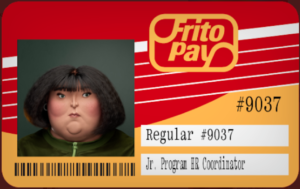
Now let’s get to some Q&A with p0pps from The Regulars!
How do you define web3?
Web3 is the decentralized web. It’s about open protocols anyone can use or build on. It’s a welcome change from the Web 2.0 “walled gardens” where we are more free, autonomous and empowered to do our business. To me, it’s an exciting time because we are carving out the future and building something brand new. In 2018 I picked up ‘Solidity for Dummies’ and had my mind blown by how digital scarcity + digital ownership actually work. I’ve been obsessed since then.
What is web3 culture?
The culture seems pretty mixed, where people are celebrating the tech, art, freedom and financial gains. The financial part is layered on top of everything and heightens the experience for everyone.
I think what we have in common is that we’re drawn to this exploratory phase of a new powerful technology evolving before our eyes. We’re shaping not only the future of finance, but also our whole digital world. I first became obsessed with the computer and internet in the late 90s and early 2000s. It was this magical time where everything was accessible if you were willing to dive into a thick book. This period we are in feels like that. What I find most exciting is that it’s all new, no one understands what we’re doing, and there’s ingenuity and discovery happening constantly.
What is Identity?
The web3 space is super saturated and there’s a lot of noise. Identity is pretty important. Online, your identity is the zone that you carve out for yourself. It’s your words, your pfp, your creations, your curation, or your place in a community. Until this year, I’m not sure I understood what identity meant on the internet. What I like is that it’s abstract and it’s based on only what you put out there. The gm’s and gn’s are really funny to me because no one knows where you are or what time zone you’re in.. and gm’s + gn’s are happening all day long.
Why is an individual’s SSI (Self Sovereign Identity) important now more than ever before?
I like the control of being your own bank and being responsible for navigating all of these systems, whether it’s just managing keys, defi or whatever else. The first time I took a loan using Maker was another crazy moment. It seemed like a tiny glimpse into our future and I started to understand how amazing Eth and the EVM are, and what it felt like to take a loan without any human involvement. It’s very powerful.
What makes a good NFT experience?
I enjoy projects that feel like someone put thought and care into them. Projects have to innovate now to stand out, and I respect any project that makes a name for itself with a new interpretation of what NFTs can be. I’m picky about art and vibe and even if a project doesn’t move me, I try and keep up with the ones that are pushing the space forward.
I was early in ENS domains but not NFTs so much. I began thinking about NFTs when Punks hit mainstream, but only as visual art. Shortly after, I set out to make the Regulars as a visual piece. Now, the visual component of a project feels like just the starting point. What makes projects special are all of the other elements, whether that’s story, performance, community, power-dynamics, incentives, interactivity. The good stuff seems to be more dynamic and projects aren’t just launched on the chain to be hodled for years. It’s about a journey and a community.
I thought Goblins and WAGDIE brought something interesting to the table. Until then I hadn’t considered performance as something to explore and those projects influenced how I think about the Regulars.
What is the purpose of Regulars?
The goals of the project, in no order, are:
- Make a 10k collection with maximum variation
- No technical compromises
- Lean into imperfection + asymmetry to bring richness + warmth to CGI, which is typically cold and sterile
- Take a different POV from other project (celebrate being Regular)
What were some of the challenges you experienced in creating and launching The Regulars?
Initially, I estimated the art would take 3 weeks. It took 6 months. We rendered out 10k individual images, something that would take my 18-core mac pro many months to do running 24x7 (I forgot the exact figure). We used a render farm. Around each corner was some new discovery or realization that needed time to consider and tease out. During the art creation, there were many of these moments, and even more after the mint. Week by week this landscape changes, so the best path for us seems to be putting one foot in front of the other and leaving room for future discovery.
It took a long time for us to mint out and many people thought we weren’t going to make it, including me at times. We just kept building through it. We built some Regular tools and non-Regular tools, and even a whole new collection. Somehow I think that time of uncertainty, when we took time to explore and dig deep to find clarity, has become part of our DNA. Long before the mint-out, we conceptualized Regular jobs. I built the contracts 2-3 times. But it just wasn’t good and if we launched it could have killed the project. So we had time to build and fail and didn’t have a minted-out project with all that pressure for ‘wen x?’. Eventually, after a lot of dog walks, I got clarity on what jobs should be. I think that idea of waiting until you have clarity is now part of our ethos.
How do you differentiate the Regulars brand?
I think we succeeded in bringing a fresh perspective to the space. Beyond a theme that goes against the grain, our goal of creating maximum variation, a willingness to do whatever it takes to get the best result, and our approach to building and exploring possibilities make us stand out. Also, we are building a deep ecosystem around the art. With writing, stories, social profiles, performances, this new phase doesn’t just introduce a financial regular economy, but a social network where the characters themselves will evolve and come to life.
Why do Regulars have value?
The goal is to provide a structure to maximize community creative output and nurture it to become more cohesive than our social channels. We just launched our updated website (regular.world) that will be the hub for all activity and ideas. We’re now a year into the project but in a way it feels like just the beginning.
The Regulars is an early NFT project that goes deeper with creativity and craft, and prioritizes long-term project health. I spent 6 months building the art with a team of specialists. This effort was self-funded but I just couldn’t take any shortcuts, I wanted to get everything perfect and it took a lot of time to make sure that each detail was as good as it can possible be, and that we were hitting the goal of creating the maximum richness + variation. I was sick of seeing projects where all the figures were in the same position. So I developed a system to change the positions, eye positions, hair color, hair style, makeup, clothing colors, and rendered each image seperately.
On our new site, you can filter by trait and see the type of variation we were able to achieve, and it was totally worth it because each Regular feels like it’s own personality. It’s amazing that someone in our chat server will post an image of a Regular and say “This guy works at a bowling alley”, and everyone agrees. A big realization is that these small details make all the difference. A slight tilt of the head, eyes that are not quite aligned, these create a sense of character and mood and I pushed it as far as possible. I also had to render out masks of each character because I decided they needed further post-processing, like color correction and the right amount of grain. I don’t think other projects have gone to these lengths for their art. I’ve spent time in the commercial realm and I don’t think any commercial enterprise would push a project this far. I think the community understands this at a gut level and this is why it holds value and will continue to hold value.
Tell me about your favorite NFT experience.
Earlier this year, after this first big crypto downturn, I was in a very negative place about the future of the Regulars. So when we minted out (6 months after launch) it was incredible. And even better was the support and enthusiasm that people were showing for the art and the concept.
How will the Regulars token work?
Each regular can mint a Job NFT. There are 60 companies and each company pays different salaries. If your regulars are working a job, they can mint our Regular Token (REG). The REG token is an erc20 and one of our next steps is to roll out the Regular Store, which accepts REG.
When do you plan on releasing an official statement on the usage and IP rights for Regulars holders? What’s the plan for IP rights?
I have been neglecting this item while working on Jobs, but IP is a priority and we will likely be releasing our own model that isn’t the same as other projects. Probably a policy that allows for both creative and financial ‘free-for-all’ in specific realms, but not all. I don’t think we will make this distinction based on revenue. These are my instincts right now but this may change.
What is intended for Regulars ‘Lore’ and how will it work?
We are inching towards a rich world with Regular lore, backstories, connections + performances. I can’t say what this will look like in the end but we are already exploring ideas on the new site. It will be built incrementally, starting with names, quotes, related regulars, and perhaps a classifieds website called regslist.
What’s the Regulars ‘Yearbook’ about and when is that product scheduled for release?
The yearbook will be a ~250/pg printed + bound book, to be released in late Fall of 2022. It will contain names + images of all 10k Regulars, and community created artwork. I am very excited about this project and it’s well on its way. We will take a snapshot of all the names and will use community art throughout the book.
Tell me about this ‘Tinder style’ trading app… what is this? Has this even been done before?
Not sure if it’s been done, it’s just like Tinder. If you get a match, you or the other party can pay gas for the trade. Before minting out we were preparing to bring this tool to other projects and across projects, but I put it on pause when OpenSea announced the seaport protocol. We may return to it but have other priorities right now.
What’s the Regular’s ‘Ugly Pool’?
The Ugly Pool is a trading pool for free trades. It’s very low gas compared to other pools and it’s been popular. Our pool is on our site but we did build a more generalized version at uglypool.xyz, where we have started onboarding other projects. Our pool is closed at the moment while we release Jobs.
Wen Regulars Metaverse? What will it look like?
Not super bullish on Metaverse in the short term, so we’ll wait and see. I do like expressive architecture and am interested in Open Metaverse + also seeing what’s possible in Decentraland for that. I’d love to do a deep dive on what is possible in terms of designing a space in the metaverse.
What’s next in the Regulars roadmap after Jobs?
More interactive items for sale in the store and activities to engage Regulars and fill out the world. And as of yesterday, regslist.
The store will offer various items, a place to buy items using the REG token. In the short term we have some small items for your desk while you’re at work. The goal for now is to create the most flexible store that allows for different types of items and sale structures.
I have another collection in mind that is regular but fluffy and cute, but this will take some time.
At what point did you decide to jump into NFTs?
April 2021. After a lot of dog walks thinking about Punks and Apes and what they meant. I recently got a Punk and am happy to be part of that project.
Several blue-chip projects have recently had major issues with secondary collection mints and launches - what have you learned from these mistakes made by other projects?
I’m not sure I can comment on this but we spend a lot of time designing a system that feels ‘simple’ and we’ve made it a free mint. Some projects feel overly complex, like a promise of something in the future, and like money-grabs that were created quickly.
What does the NFT market look like in 5 years? Where do you see the innovation?
I wouldn’t be a good person to discuss the market, but I would guess that last year we saw euphoria and very high prices and only the top projects will carry those valuations forward. But there’s also a big population who hasn’t entered the space. I really don’t know.
I expect the innovation will be more around interactivity. I could see a few things happening – projects built on ETH where it’s slow and expensive will continue to innovate in relatively paired-down but powerful ways. And then I could see big game companies with huge staff and huge budgets trying things out on high-throughput chains. And everything in between. The idea of ownership and scarcity in a big game setting feels like something very different from the art-centric projects we’ve seen over the last two years.
What does Regulars look like in 5 years?
We’re a Dao with an organized structure with incentives, responsibilities and payment. Our site is the regular bible with all the details, intertwined stories and various media for all the Regulars.
S.W.O.T ANALYSIS of Regulars! Strengths? Weaknesses? Opportunities? Threats?
- Strengths: Unique POV as a digital art project. Building for the long-term.
- Weaknesses: Small team, modest funding.
- Opportunities: Strong foundation + community that is setting us up for a lot of creative output + growth.
- Threats: Wendy’s or McDanny’s becoming litigious. NFTs ded.
In closing…
I think the only way to close this interview is with right-clicks of some amazing Regulars. The artwork stands by itself and will haunch your dreams until you find your forever Reg on Opensea.
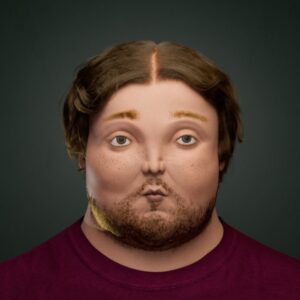
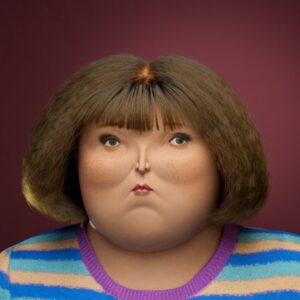
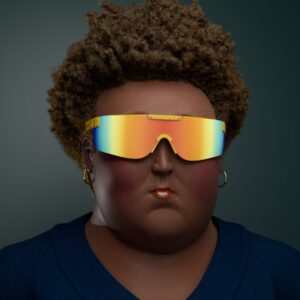
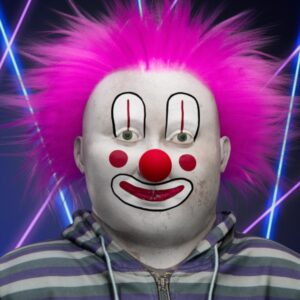
Disclosure - that's my Regular#9800 above!
Finally, make sure to check out the website for The Regulars to engage with all the cool tools being developed.